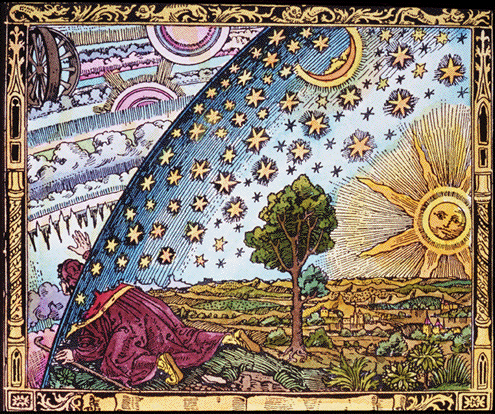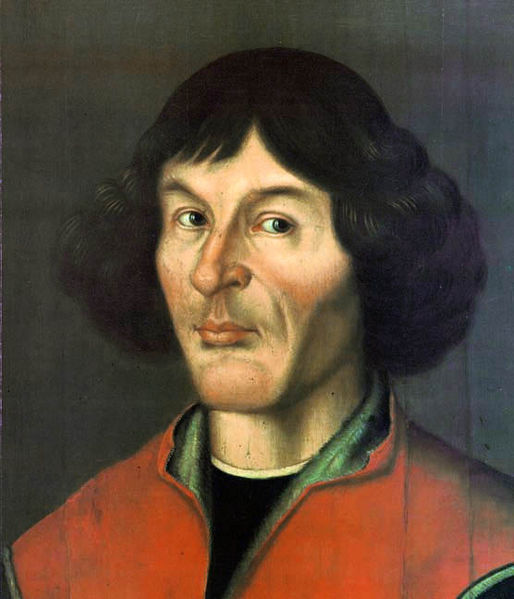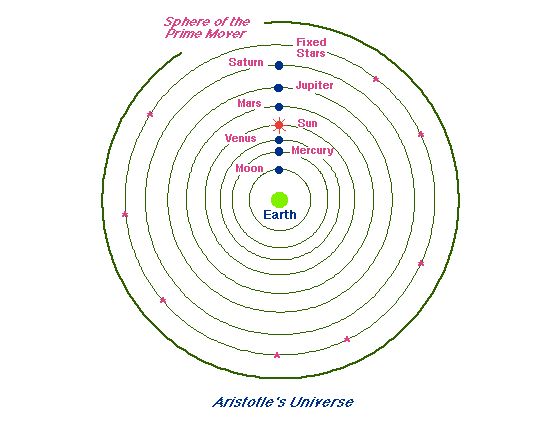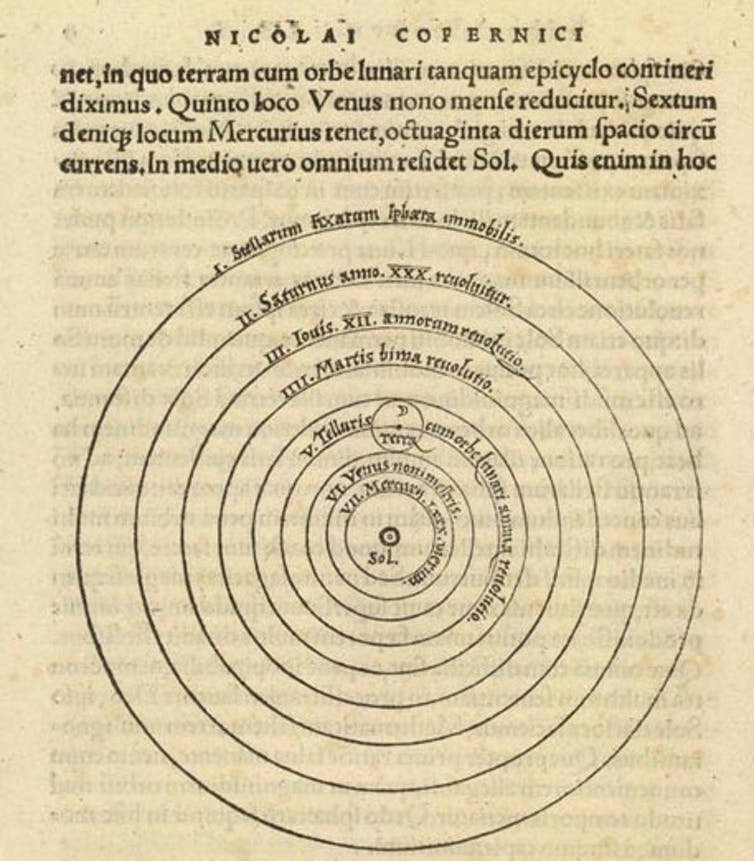

This engraving by an unknown artist is called Empedocles Breaks through the Crystal Spheres. It first appeared in 1888 in a book by Camille Flammarion with the caption: “A missionary of the Middle Ages tells that he had found the point where the sky and the Earth touch ….” Image via Wikimedia Commons.
February 19, 1473. Nicolaus Copernicus, a Renaissance astronomer and mathematician, was born on this day in Thorn, Poland. At a time when deeply entrenched beliefs placed the Earth at the center of the universe – nested within crystal spheres – he proposed the revolutionary idea that Earth revolves around the sun. Can you picture the leap of imagination required for him to conceive of a sun-centered universe? His book – “De revolutionibus orbium coelestium” (“On the Revolutions of the Celestial Spheres”) – was published just before his death in 1543. It set the stage for all of modern astronomy.
Today, people speak of his work as the Copernican Revolution.

Nicolaus Copernicus via Wikipedia.
Copernicus wasn’t the first to conceive of a sun-centered universe. Early Greek philosophers also spoke of it.
It was the Greek philosopher Aristotle, however, who proposed that the heavens were literally composed of 55 concentric, crystalline spheres to which the celestial objects were attached.
In Aristotle’s model, Earth lay at the center of these spheres.

Earth-centered model of the universe via Aristotle. In the medieval world, people thought Earth lay enclosed within crystal spheres. Read more about about medieval astronomy here.
Thus Earth lay – fixed and enclosed – until Copernicus published his version of a heliocentric, or sun-centered, universe.
Read more: Copernicus’ revolution and Galileo’s vision, in pictures

This is Copernicus’ version of a heliocentric – or sun-centered – universe. Image via Library of Congress.
Bottom line: Nicolaus Copernicus proposed that the sun, not the Earth, was at the center of the universe. He was born on this date, February 19, in 1473.
from EarthSky https://ift.tt/39SxWqR


This engraving by an unknown artist is called Empedocles Breaks through the Crystal Spheres. It first appeared in 1888 in a book by Camille Flammarion with the caption: “A missionary of the Middle Ages tells that he had found the point where the sky and the Earth touch ….” Image via Wikimedia Commons.
February 19, 1473. Nicolaus Copernicus, a Renaissance astronomer and mathematician, was born on this day in Thorn, Poland. At a time when deeply entrenched beliefs placed the Earth at the center of the universe – nested within crystal spheres – he proposed the revolutionary idea that Earth revolves around the sun. Can you picture the leap of imagination required for him to conceive of a sun-centered universe? His book – “De revolutionibus orbium coelestium” (“On the Revolutions of the Celestial Spheres”) – was published just before his death in 1543. It set the stage for all of modern astronomy.
Today, people speak of his work as the Copernican Revolution.

Nicolaus Copernicus via Wikipedia.
Copernicus wasn’t the first to conceive of a sun-centered universe. Early Greek philosophers also spoke of it.
It was the Greek philosopher Aristotle, however, who proposed that the heavens were literally composed of 55 concentric, crystalline spheres to which the celestial objects were attached.
In Aristotle’s model, Earth lay at the center of these spheres.

Earth-centered model of the universe via Aristotle. In the medieval world, people thought Earth lay enclosed within crystal spheres. Read more about about medieval astronomy here.
Thus Earth lay – fixed and enclosed – until Copernicus published his version of a heliocentric, or sun-centered, universe.
Read more: Copernicus’ revolution and Galileo’s vision, in pictures

This is Copernicus’ version of a heliocentric – or sun-centered – universe. Image via Library of Congress.
Bottom line: Nicolaus Copernicus proposed that the sun, not the Earth, was at the center of the universe. He was born on this date, February 19, in 1473.
from EarthSky https://ift.tt/39SxWqR

Aucun commentaire:
Enregistrer un commentaire